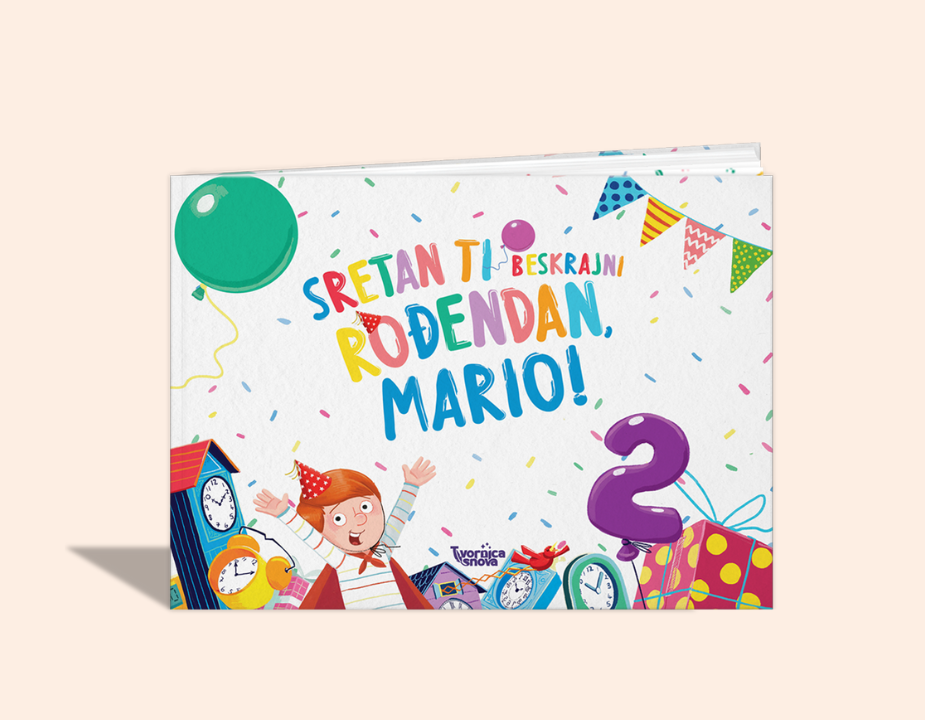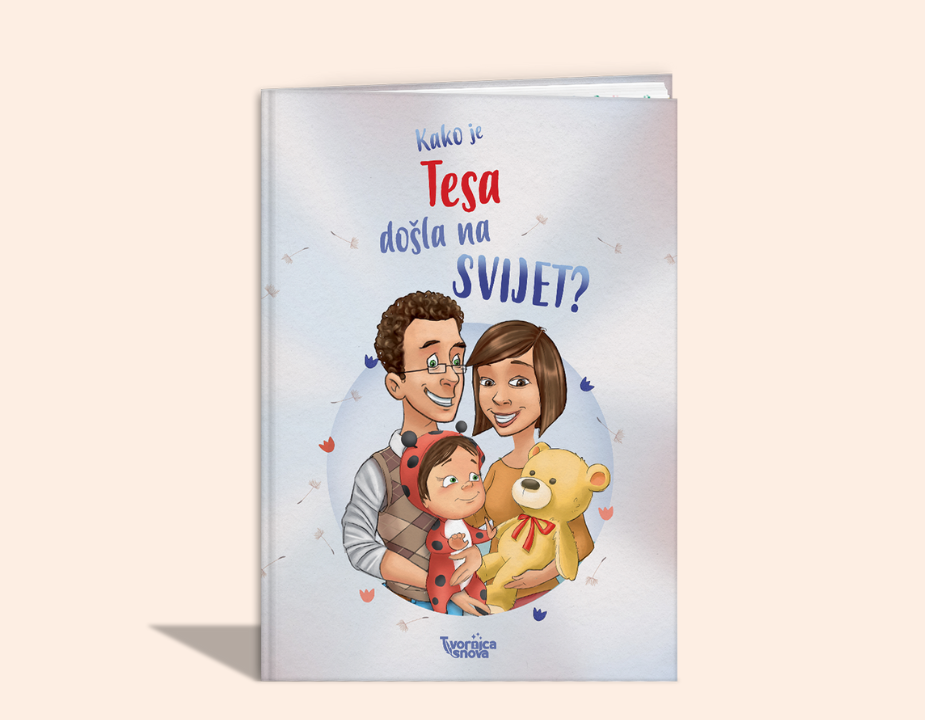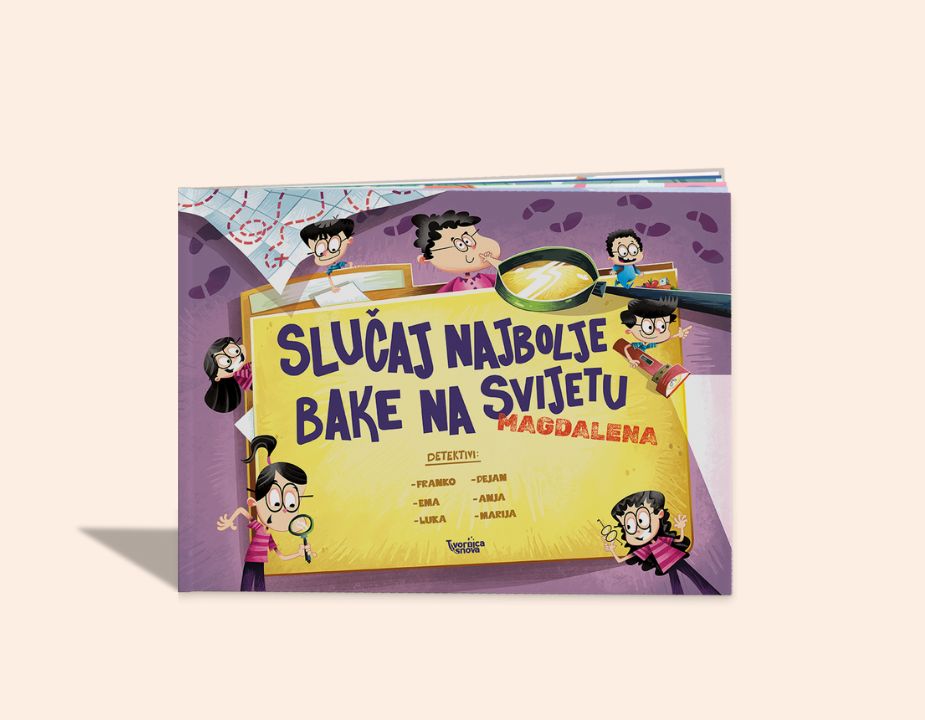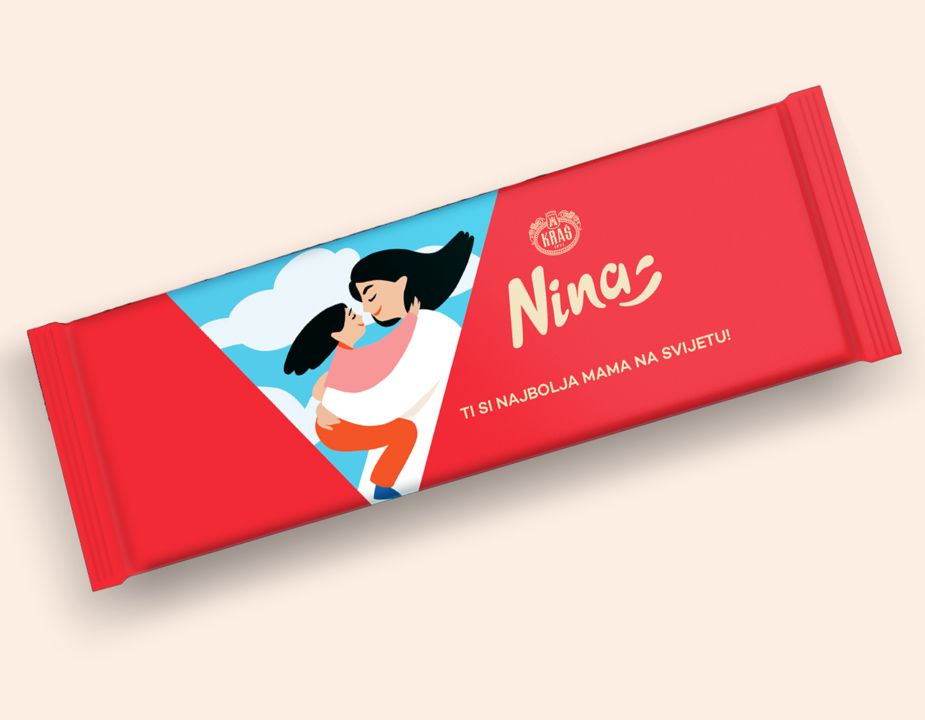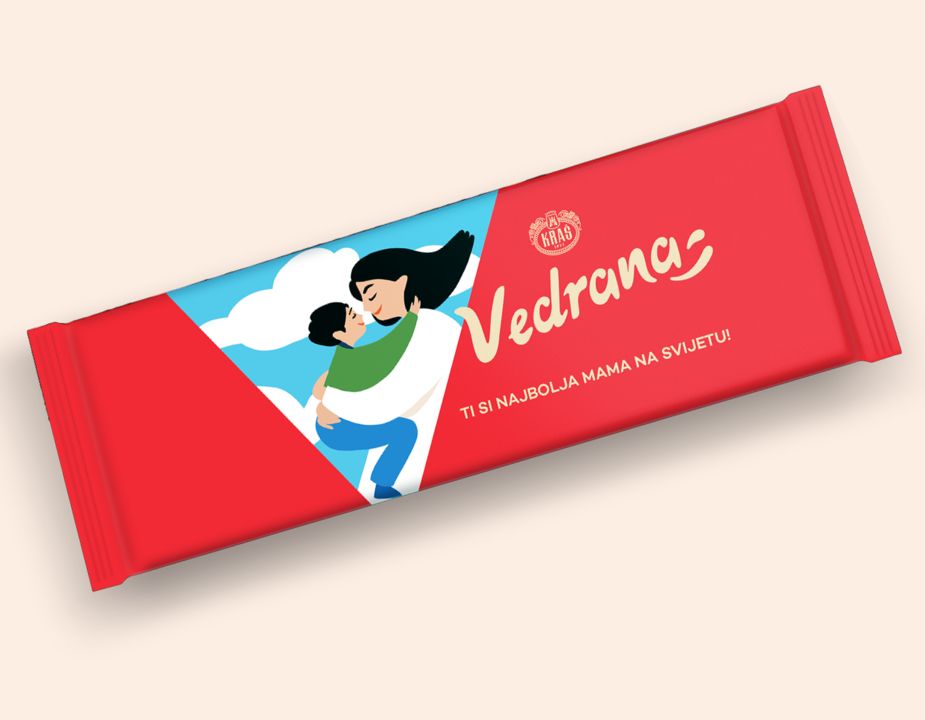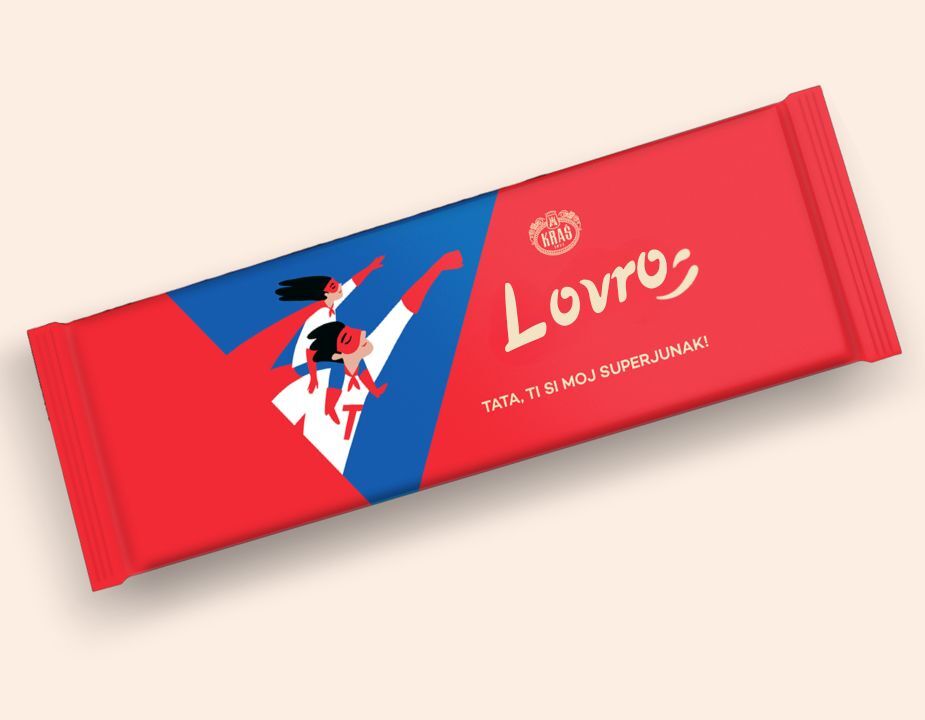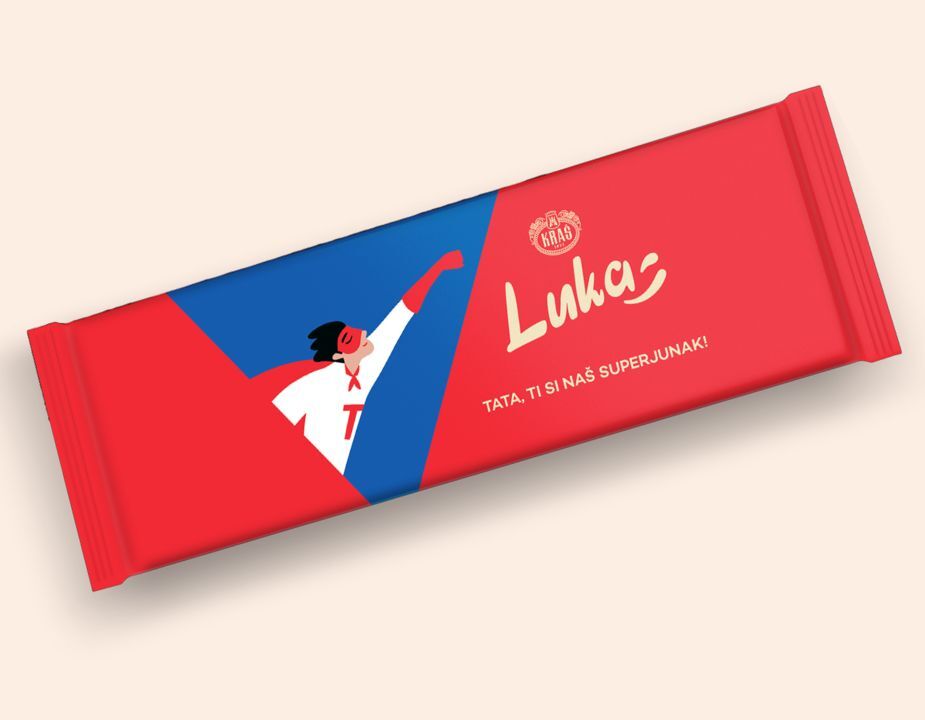Author and illustrator Kyle Beckett: “All the heavy work is incredibly worth it in the end!”
Kyle Beckett illustrated "Where's Grandma Gone?", a new book by Pluma studios, and told us all about his creative process.
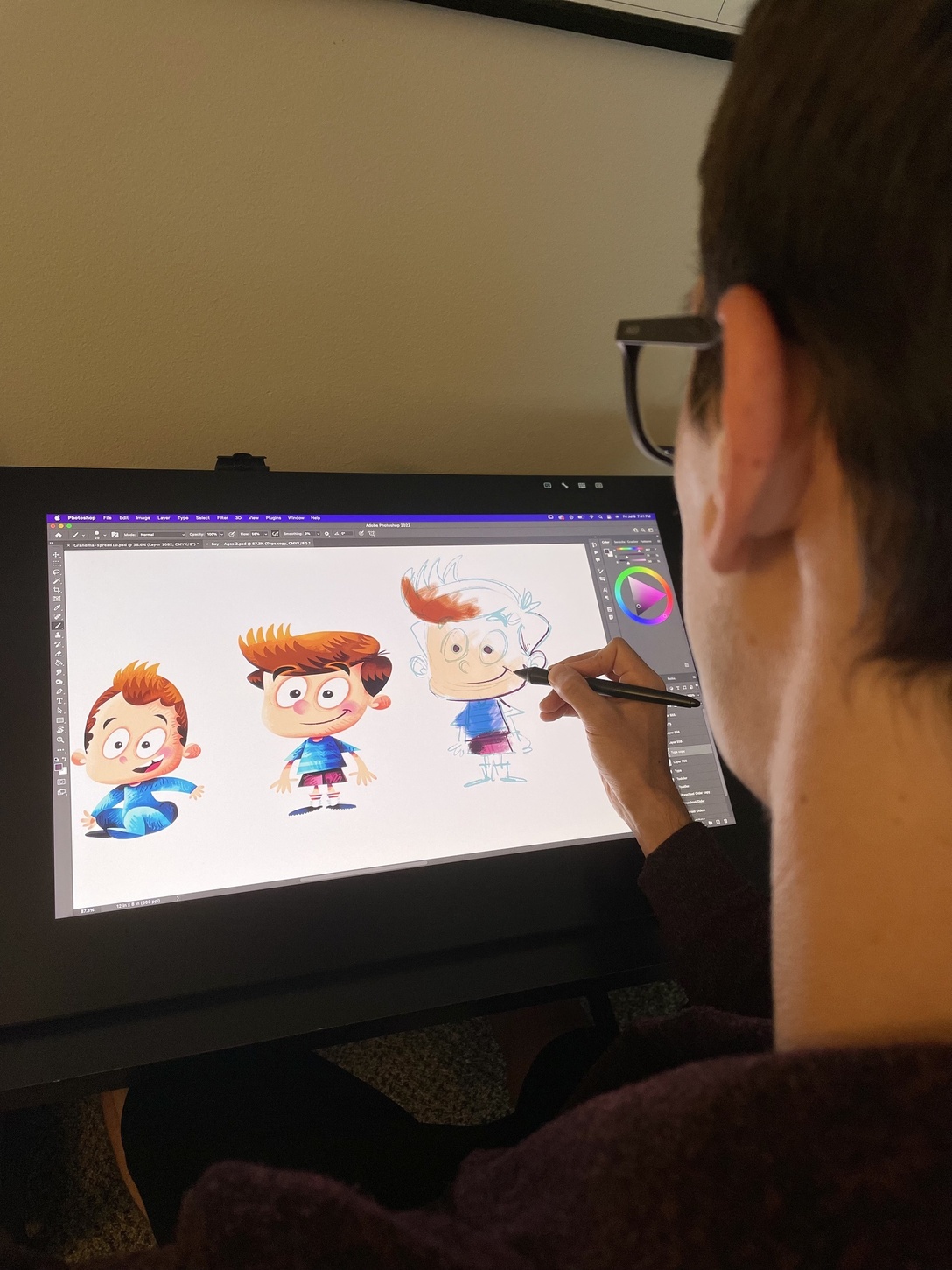
When creating personalized children’s books, one of the most important factors is certainly to find an illustrator who, when visualizing the text, will be able to perfectly follow the author’s train of thought and incorporate all aspects of personalization into the illustrations. The person Pluma studios chose to illustrate our newest personalized book „Where’s Grandma Gone?“ is Kyle Beckett, an American illustrator who is also an author of several children’s books himself.
Illustrator Kyle Beckett on inspiration, creative process and favourite scenes from the book
Kyle spoke not only about the flow of the creative process when creating the illustrations for this book and the personalization of the characters, but also about the process of creating illustrations in general. He revealed to us who he always turns to for advice and where he most often finds inspiration for his creations. He also decided to give very valuable advice to young illustrators. Find out what else he decided to share with us in the interview below.
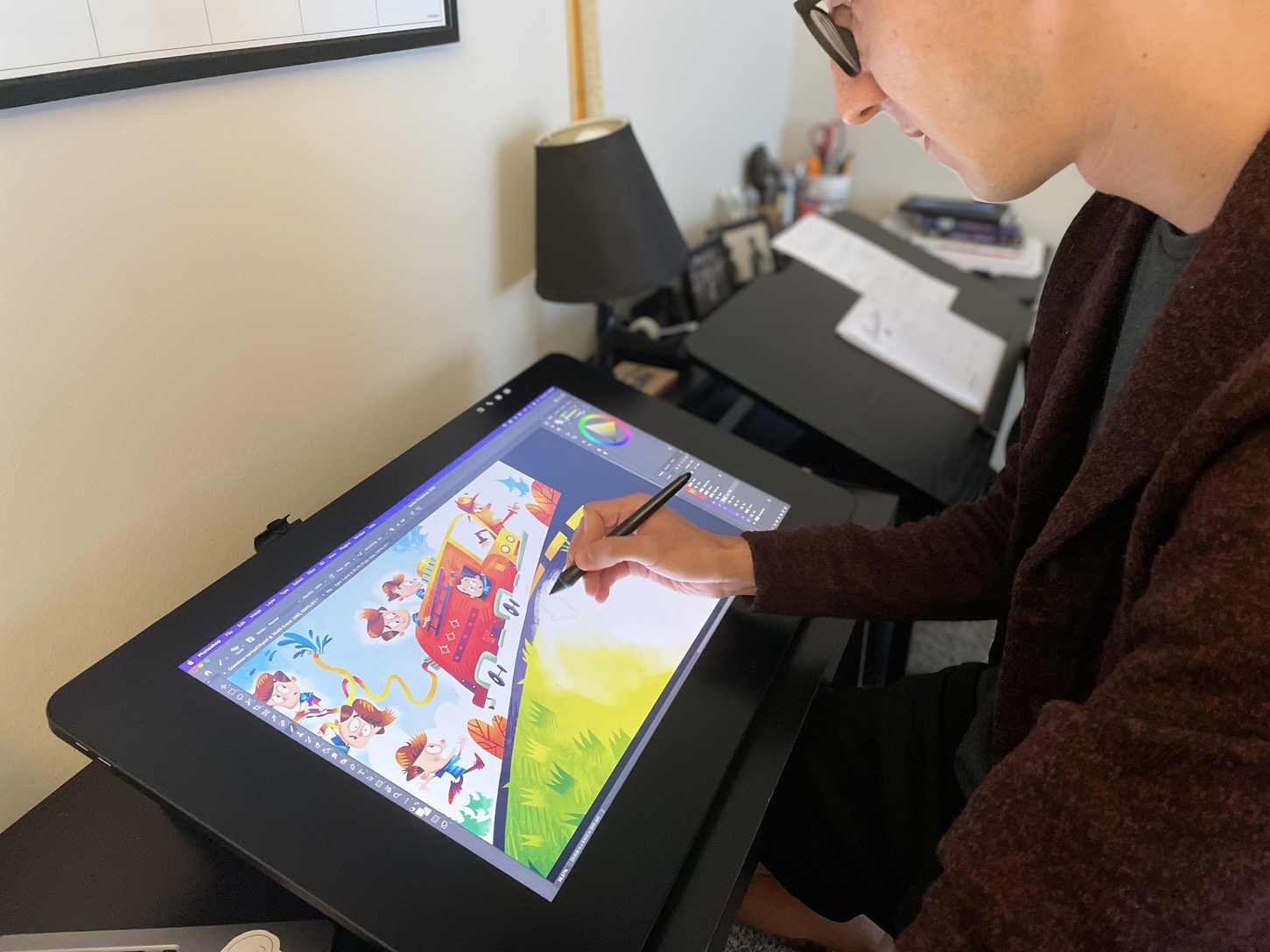
1. What was your initial impression when you first read the book “Where’s Grandma Gone?“
I thought the story was so much fun! When I look for a story to illustrate, I always think about how creative I can be with the pages and how much I can add to the telling. It’s always fun to have a wild, wacky tale like this to make every page unique and engaging.
2. Did you have a vision of the scenes and characters from the very start or did you give yourself some time to get extra acquainted with the story?
I usually start with very loose sketches, and I try to get them down before I have time to overthink anything. I like to let the vision come through as I sketch, that’s when my brain is working at its most efficient. That being said, I love feedback and collaboration, so I am always open to hear what the team is thinking on any design choices as well.
3. What did your creative process look like when creating the scenes and the character’s customizable options (age, hairstyles and body types)?
That was the toughest part about this book. I had to give each character so many different options and variables that it could easily take over the creative side of the story. My process focused on efficiency and how I could get all of the options incorporated without interfering with the heart of the story, the words and the illustrations!
4. When colouring your fabulous illustrations, how did you pick and choose the colours, shades and hues?
Trusting my eye has (for the most part) been my go-to method when it comes to colour. Working digitally, the editing process can be very forgiving, and that gives me a lot of time to experiment and work through lots of ideas before landing on the best one. To sum it all up, my method for colour is to throw it all out there until something works!
5. As you very well know, this book has up to 7 customizable characters. Was it difficult creating a balance when portraying those various characters in different scenes?
It was very difficult, and the most unique part of this book! The inclusivity of the project is what drew me in in the first place. I was determined to customize the characters in as fun and engaging a way as possible. There was a lot of scribbling and note-taking involved, but the stress was well worth it in the end!
6. With so many possible characters, how did you make decisions regarding the character layout in the scenes?
First thing is first when it comes to illustrating: composition. Having a composition that could go from one to seven characters took a lot of trial and error, and more than a few headaches. It all came down to sketching, sketching, sketching; and emailing back and forth with my director, Anja. We would rework scenes together until we got it just right.
7. Everyone was blown away by the very clever way in which you incorporated the text in the illustrations, how did you manage to do it so well?
I have a love-hate relationship with the text. Of course, it needs to be there, but I always find it hard to get the balance right between image and word. I look at a lot of my favourite picture books and illustrators to get a better idea of how they would do it. Most of the time, it involves getting a nice sketch down and then reworking the idea to fit with the text. That way I don’t limit my creativity before it gets started!
8. Do you have a favourite scene or character in the book?
I love all of the characters! But if I had to pick one, it would be the cat that appears throughout the book (and also the camel in the ‘ship-sinking’ scene).
As for my favourite scene, I think there is something special about the page where the characters are all looking at the grandfather clock.
9. What were your greatest challenges when creating this book?
The biggest challenge was the variability of the compositions and editing all of the characters. There was a lot of work on the back end after finishing a scene; making every hair colour for every hairstyle and every age for every boy or girl, etc.
10. My favourite scene is the one on page 13 because of your illustrations. You’ve managed to perfectly portray the story that follows a child’s train of thought and the logic of a child detective. The scene itself looks almost biblical, reminiscent of Noah’s Ark. On the other hand, the scene on page 8 reminded me of the Zagreb Film’s 1959. animated film „Cow on the Moon“. Do you get inspiration from literature, animated movies or other picture books?
I love to read. Most of my inspiration comes from books I’ve read or picture books I’ve studied. I keep a running list of illustrators and authors in my studio that I look through if I ever need a boost of inspiration.
11. This is the first personalized book you’ve illustrated. What is the difference between illustrating a regular book and a personalized one?
The biggest difference is that when you’ve finished a scene in a regular picture book, that’s it…you’re done! But with a personalized book like this, once the page is coloured up and finished, the work is only just beginning. Every character needs to have five hairstyles and four hair colours and two different shirts, etc. The workload is much heavier, but in the end, it is so incredibly worth it!
12. What types of illustrations do you do? Do you have a favourite among them?
My favourite illustrations are the ones that speak for themselves, I compare them to ‘one-liners.’ Characters are the most important thing to me, and their reactions to the environment. It’s hard to pick a favourite, it certainly depends on the day.
13. What is the starting point of your creative process and what does it take to get to the final product?
The beginning of my process is just scribbling on a page to wake my brain up. I usually try to think of a good joke or a fun spark to get an idea going. After that, I make the illustration and look back at it thinking, how did I do this again?
14. Do you solely work in your studio or do you sometimes like to escape to nature, and maybe even to the hustle and bustle of the city?
When it comes to illustrating, I have a very specific area to work in. My studio in my apartment is where I know I can get the most work done and focus. I also write, and when it comes to putting words on a page I like to be a bit more cerebral, out in nature or just in a nice, sunny room.
15. Do you like to listen to music while creating illustrations? If so, what kind of music do you like?
I love listening to music! Most of the music I listen to is folk rock, stuff that my wife can’t stand. I also listen to lots and lots of podcasts!
16. Do you have a role model when it comes to artistic creations?
There are too many to count! I got into picture book illustration because of two illustrators: Jon Klassen and Benji Davies. They both showed me what a picture book could be and how an illustration could add to the story and not just be a decoration.
17. What would you say are the easiest and the most difficult aspects of making illustrations?
The easiest part is definitely the finishing touches or adding all of the fun little bits of detail. I think the hardest part is starting a new piece and trying to remind yourself that you know what you are doing! There is a lot of confidence lost in the early stages of an illustration.
18. Can you pinpoint a previous project that was the most challenging to carry out?
I did a book called ‘How to Build a Haunted House’ that was challenging because I had just started illustrating picture books and there was a lot of ‘faking it until I make it’ going on. I love how that book turned out, but still, look back wanting to do it all over again with what I know now!
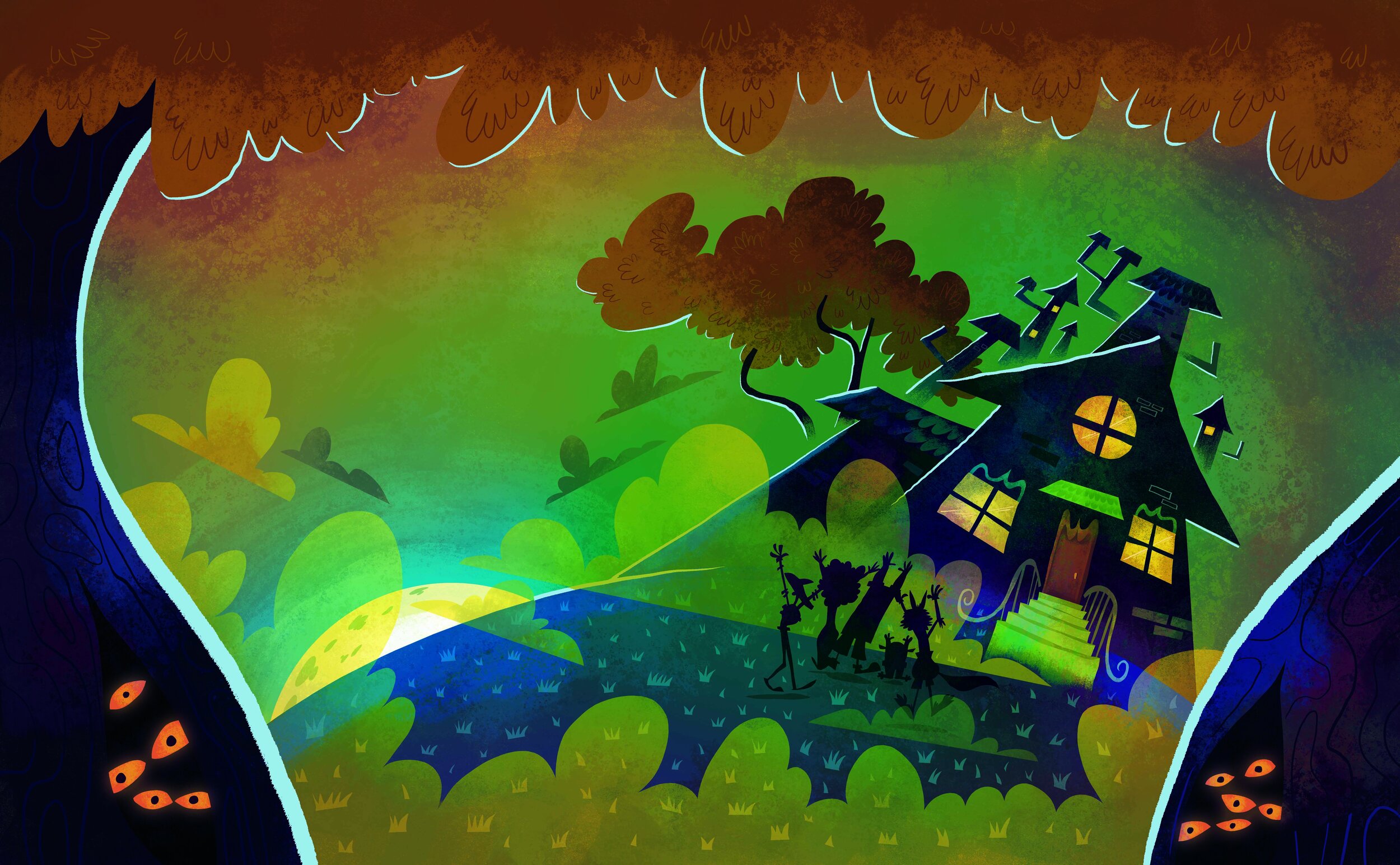
19. What about a favourite project, do you have a project you are most proud of?
That’s tough! I like to say that my favourite project is usually the next one.
20. How do you deal with creative blocks? Every artist must face them at some point…
Creative block is something every artist fears, and every artist has to deal with on a regular basis. I deal with it in two ways: by dropping everything and drawing something I want to draw (see my Instagram for those drawings) or by dropping everything and going for a run, walk, nap, etc! Sometimes you just need to go outside and reframe your mind.
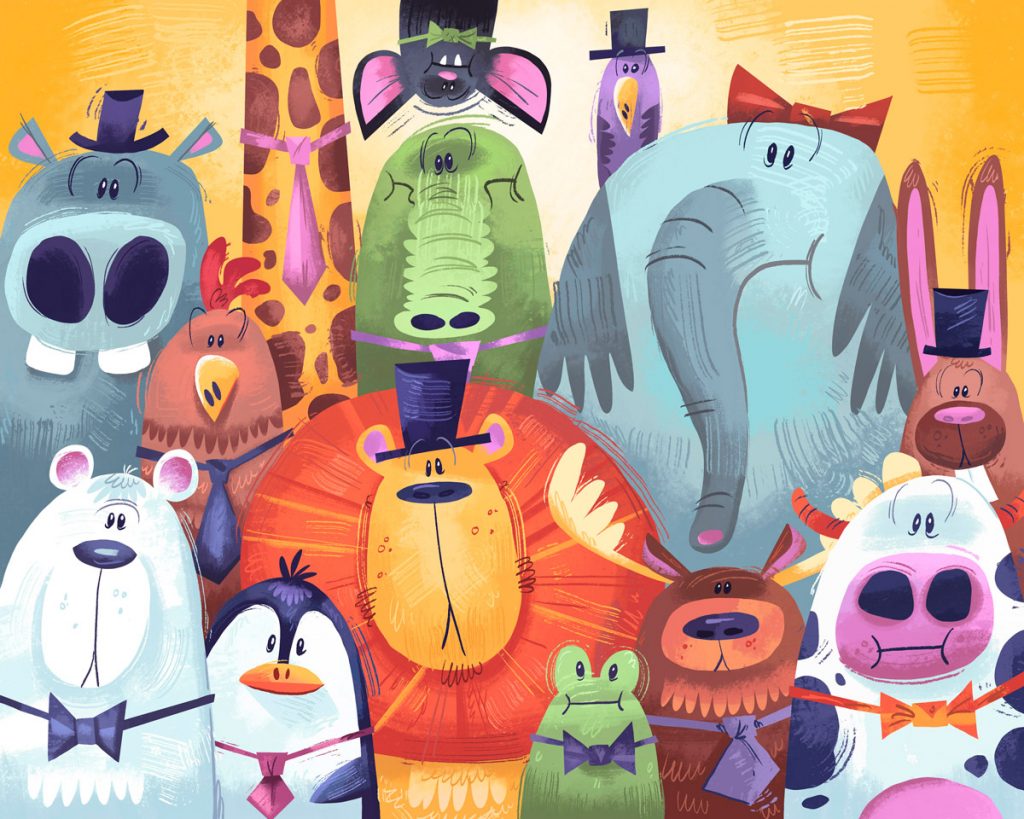
21. You work with a lot of authors from all around the world. When you get an offer from an author from a certain corner of the globe, do you like to get acquainted with that country’s culture? Do you research its illustrators and children’s books or anything else that might help you adapt and tailor your illustrations to the intended audience?
I do a lot of research, but most of it is specific to the story being told. If the story involves a certain culture or lifestyle I would certainly dive right into it and learn as much as I can. For me, it’s all about getting acquainted with the story and the author’s intention. After that, everything else is just about making every reader feel included and represented.
22. Aside from being an illustrator, you are also an author yourself. Where do you find the inspiration for your own stories?
I love writing just as much as illustrating. It’s a more recent endeavour, but one I am very hopeful to do more of in the future! I read a lot of middle-grade books to inspire my own stories: Roald Dahl is a big influence, as well as Katherine Arden and Trenton Lee Stewart.
23. When creating your own books, what comes first to you – the story or the illustration?
It depends! For the most part, I think the image comes first, or the situation in general. But sometimes a story will spring forth from a funny sentence or turn of phrase.
24. How do creators (be it writers or illustrators) create their signature style?
I am a firm believer that you can’t go to your style, that you need to let it come to you. Too many people (including me sometimes) overthink style and forget that it is what naturally comes through in your work. Don’t fight your style to try and draw like someone else, but learn how to be inspired by someone else’s work and use it to bring out your own unique voice.
25. Do you have a go-to person to talk to or seek advice from when faced with a dilemma during your creative process?
To be completely honest, it’s usually just me complaining to my dog! His name is Goose, and he is the best listener. His advice usually involves taking him on a walk and giving him treats.
26. And last but not least, what advice would you give to young illustrators out there?
My advice would be to have as much fun as possible. If you aren’t enjoying yourself, then you can’t expect your audience to enjoy themselves either! Don’t take it too seriously, and learn from the struggles to become a better artist tomorrow than you are today.

